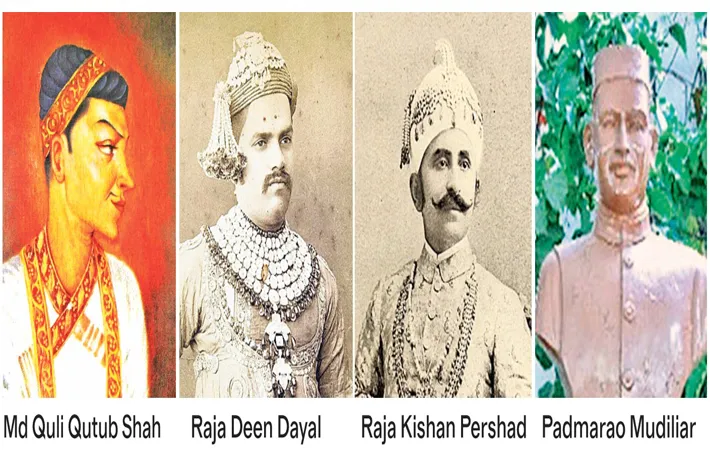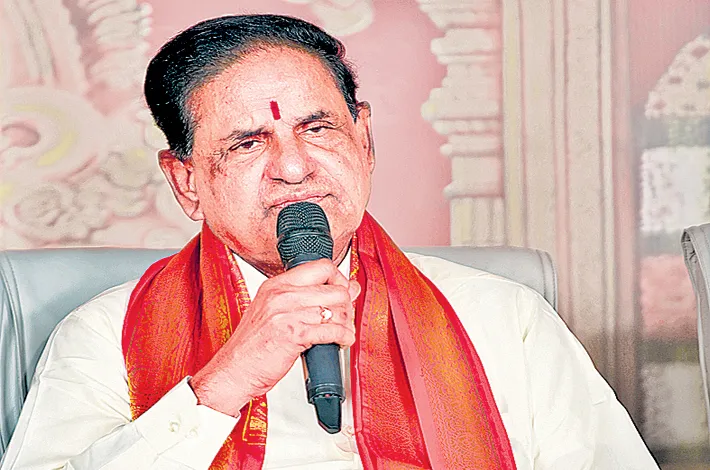Hyderabad, a melting pot of cultures
24-06-2025 12:00:00 AM

A case for recognising communities that shaped the city
V J M DIVAKAR I hyderabad
Hyderabad, the vibrant capital of Telangana, is a city that embodies India’s cultural mosaic. For centuries, it has been a melting pot of diverse communities, including Tamils, Maharashtrians, Malayalees, Gujaratis, Rajasthanis, Punjabis, and Kayasthas, who have significantly shaped its historical, cultural, and economic landscape. With Hyderabad’s emergence as a global Information Technology (IT) hub, young professionals from across India have further enriched its cosmopolitan character.
As the city continues to evolve, there is a growing call for the Telangana government to formally recognize the contributions of these communities by offering their representatives key posts and positions. This analysis explores the historical and contemporary roles of these groups and the implications of such recognition.
Historical Contributions to Hyderabad’s Development
Hyderabad’s history as a princely state under the Nizams of the Asaf Jahi dynasty (1724–1948) is marked by its cultural diversity and economic prosperity. The city, founded in 1591 by Muhammad Quli Qutb Shah, attracted settlers from various regions due to its strategic location and thriving trade in pearls, diamonds, and textiles. Communities such as Tamils, Maharashtrians, Malayalees, Gujaratis, Rajasthanis, and Punjabis settled in Hyderabad over centuries, contributing to its growth as a cultural and commercial hub.
Tamils, for instance, have left a distinct mark, particularly in the Secunderabad Cantonment area, where their proximity to Tamil Nadu fostered a blend of tradition and modernity. Tamil residents are known for balancing contemporary lifestyles with deep-rooted cultural practices, evident in their temple visits and traditional attire. Maharashtrians, who form a significant portion of the population in the Marathwada region (part of the erstwhile Hyderabad State), contributed to agriculture and trade, with Marathi being a widely spoken language in the state as per the 1941 census.
Malayalees, though smaller in number, brought their expertise in education, while Gujaratis and Rajasthanis established thriving mercantile networks, bolstering Hyderabad’s reputation as a trade center. Punjabis, known for their entrepreneurial spirit, contributed to commerce and small-scale industries. The Parsees extended loans to the Nizam and served in high positions in civic administration. These communities enriched Hyderabad’s cultural tapestry, with their festivals, cuisines, and languages coexisting alongside the dominant Telugu and Urdu traditions.
A particularly notable contribution came from the Kayasthas, a community from Uttar Pradesh, who played a pivotal role in the Nizam’s administration. Kayasthas, known for their administrative acumen, occupied high-ranking positions, including the prime ministership. Their expertise in governance, record-keeping, and diplomacy was instrumental in the efficient functioning of the Nizam’s government. The Nizams’ patronage of diverse communities fostered a unique “Ganga-Jamuni Tehzeeb,” symbolizing Hindu-Muslim unity and cultural coexistence.
The Nizam Era: A Foundation for Modern Hyderabad
The Asaf Jahi Nizams laid the foundation for modern Hyderabad through significant infrastructure and institutional developments. Key institutions like Osmania University, Osmania General Hospital, the High Court, and the State Central Library were established during their rule, many of which continue to serve the city. The Nizams’ inclusive governance allowed communities from different regions to thrive, with Hyderabad becoming a hub for education, healthcare, and culture.
Hyderabad as an IT Hub: A new wave of contributors
Since the 1990s, Hyderabad has transformed into a global IT hub, often dubbed “Cyberabad.” Economic reforms and proactive state policies under successive governments, including those led by Nara Chandrababu Naidu and K. Chandrasekhar Rao, attracted multinational corporations and created a favorable business environment. The present Congress government led by Chief Minister A Revanth Reddy, IT and Industries Minister D Sridhar Babu have taken the IT and Pharma sectors forward and getting investments to the state world wide. The establishment of IT parks, Special Economic Zones (SEZs), and initiatives like T-Hub and the Telangana Academy for Skill and Knowledge (TASK) fueled this growth.
This IT boom drew young professionals from across India, including Tamils, Maharashtrians, Malayalees, Gujaratis, Rajasthanis, Biharis and Punjabis, who brought technical expertise and innovation. Hyderabad’s universities and engineering colleges produce a steady stream of skilled graduates, many from these communities, ensuring a robust talent pipeline. The city’s cosmopolitan culture, low crime rates, and affordable living conditions have made it an attractive destination for these professionals, who now call Hyderabad home. The IT industry has significantly impacted Hyderabad’s economy, contributing to its status as India’s sixth-largest urban economy with an output of US$95 billion.
The Case for Government Recognition
Despite their historical and contemporary contributions, the representation of these communities in Telangana’s political and administrative spheres remains limited. The call for the Telangana government to recognize their roles by appointing representatives to important posts is rooted in the principles of inclusivity and equity. Such recognition would acknowledge their contributions to Hyderabad’s development and strengthen the state’s commitment to its diverse population.
The Telangana government has a precedent of honouring contributions through awards and initiatives. For instance, it has received accolades for urban development projects and environmental initiatives, such as the Green Apple Awards and the World Green City Awards. Extending this recognition to community representatives could involve appointing them to advisory boards, cultural councils, or administrative positions, ensuring their voices are heard in policy-making.
However, this proposal raises questions about implementation. Critics may argue that prioritizing specific communities could lead to accusations of favoritism or undermine meritocracy. To address this, the government could adopt a transparent selection process based on contributions and expertise, ensuring fairness. Additionally, recognizing these communities does not diminish the contributions of native Telugus or Hyderabadi Muslims, who form the majority and have been integral to the city’s identity.
Implications and Future Outlook
Formal recognition of these communities could have far-reaching implications. It would reinforce Hyderabad’s reputation as a city of inclusivity, attracting more talent and investment. It could also set a model for other Indian states with diverse populations, promoting national unity. Moreover, involving community representatives in governance could lead to policies that better address the needs of Hyderabad’s diverse residents, from cultural preservation to economic opportunities.
Hyderabad’s journey from a princely state to a global IT hub is a testament to the contributions of its diverse communities. Tamils, Maharashtrians, Malayalees, Gujaratis, Rajasthanis, Punjabis, and Kayasthas have shaped its history, while young IT professionals continue to drive its future. The Telangana government has an opportunity to honour these contributions by offering their representatives meaningful roles in governance. Such a move would not only celebrate Hyderabad’s pluralistic heritage but also strengthen its position as a beacon of unity and progress in India. As the city evolves, embracing its diversity will be key to sustaining its global stature.








